It’s end-of-year list time again, when every music blogger is compelled to go back through the year’s record releases and try to pick out the best of them,
Let’s get the obvious disclaimers out of the way first. This is not intended to be a definitive list of the very best albums released in the year. For starters all preferences are personal and subjective. And secondly and more importantly, it’s restricted to those records I’ve actually had the chance to hear. There are no doubt a great many awesome releases I haven’t heard yet.
After many repeated listens I’ve managed to whittle the list down to 21 (Why 21? Why not?). The fact that it turned out to be very hard to restrict it to just 21 speaks volumes about how great a year it’s been. One or two big names ended up not making the cut.
So, without further ago, here’s the first half of my list, Had I not abandoned trying to sort them all into meaningful order as an impossible task, they would be 21 down 11. As it is, they’re sorted alphabetically.
Big Big Train – English Electric Part Two
 The second half of English Electric follows in a similar vein to the first, with their very evocative and very English brand of pastoral progressive rock. The storytelling lyrical focus shifts to northern England and the twentieth century with tales of railwaymen, coal miners and shipbuilders, and it all sounds far more authentic than much 80s-style neo-prog.
The second half of English Electric follows in a similar vein to the first, with their very evocative and very English brand of pastoral progressive rock. The storytelling lyrical focus shifts to northern England and the twentieth century with tales of railwaymen, coal miners and shipbuilders, and it all sounds far more authentic than much 80s-style neo-prog.
Black Sabbath – 13
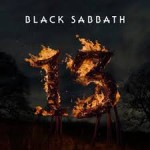 Neither quite the masterpiece some hoped for nor the trainwreck some feared, the reunion of Ozzy Osborne, Tony Iommi and Geezer Butler still delivers a very solid piece of work that proves they still have something to say after all these years. If this does prove to be their final album, it’s a worthy addition to their legacy.
Neither quite the masterpiece some hoped for nor the trainwreck some feared, the reunion of Ozzy Osborne, Tony Iommi and Geezer Butler still delivers a very solid piece of work that proves they still have something to say after all these years. If this does prove to be their final album, it’s a worthy addition to their legacy.
The Computers – Love Triangles, Hate Squares
 The best no-nonsense old-fashioned rock and roll record I’ve heard all year, by a band who sound as as though they have one foot in 1958 and one in 2013, full of short and punchy tunes that hit you right between the eyes. The end result somehow ends up reminding me of some aspects of very early Blue Öyster Cult.
The best no-nonsense old-fashioned rock and roll record I’ve heard all year, by a band who sound as as though they have one foot in 1958 and one in 2013, full of short and punchy tunes that hit you right between the eyes. The end result somehow ends up reminding me of some aspects of very early Blue Öyster Cult.
Cosmograf – The Man Left In Space
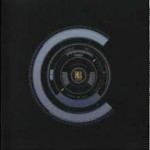 An evocative and atmospheric album from multi-instrumentalist and vocalist Robin Armstrong. Though there are guest appearances from Matt Stevens and Nick D’Virgilio amongst others, Robin plays most of the instrumentation from guitars to drums to keys. The haunting title track is a standout, perhaps one of the songs of the year, and there’s a lot to like across the rest of the album.
An evocative and atmospheric album from multi-instrumentalist and vocalist Robin Armstrong. Though there are guest appearances from Matt Stevens and Nick D’Virgilio amongst others, Robin plays most of the instrumentation from guitars to drums to keys. The haunting title track is a standout, perhaps one of the songs of the year, and there’s a lot to like across the rest of the album.
The Fierce and The Dead – Spooky Action
 Matt Stevens and his band in full electric mode mixing progressive rock, post-punk, indie/alternative and metal resulting in the instrumental record of the year. Narrow genre definitions cannot contain this record; it’s the sort of thing that ought to have a huge crossover appeal way beyond the narrow confines of the Prog world.
Matt Stevens and his band in full electric mode mixing progressive rock, post-punk, indie/alternative and metal resulting in the instrumental record of the year. Narrow genre definitions cannot contain this record; it’s the sort of thing that ought to have a huge crossover appeal way beyond the narrow confines of the Prog world.
King Bathmat – Overcoming the Monster
 A powerful combination of grungy guitar riffs with progressive rock textures and melodies, sounding like what you might get if you combined Black Sabbath with Spock’s Beard. The end result is a record with a very contemporary feel despite its use of organic 70s sounds, old-school progressive rock reinvented for the 21st Century.
A powerful combination of grungy guitar riffs with progressive rock textures and melodies, sounding like what you might get if you combined Black Sabbath with Spock’s Beard. The end result is a record with a very contemporary feel despite its use of organic 70s sounds, old-school progressive rock reinvented for the 21st Century.
Maschine – Rubidium
 The long-awaited début from Luke Machin’s band combines some stunning instrumental virtuosity with a very mature approach to composition. Their complex and ambitious songs are a seamless blend of metal, jazz and rock into, with great use of dynamics and an ear for a good melody. This is the sound of a band from whom we can probably expect great things over the coming years.
The long-awaited début from Luke Machin’s band combines some stunning instrumental virtuosity with a very mature approach to composition. Their complex and ambitious songs are a seamless blend of metal, jazz and rock into, with great use of dynamics and an ear for a good melody. This is the sound of a band from whom we can probably expect great things over the coming years.
Mr So and So – Truth & Half Lies
 The fruit of a successful Pledge Music project, Mr So and So’s fourth album is by far their most impressive to date. It’s a hugely varied record with some strong songwriting that uses their distinctive dual male/female lead vocals to great effect, and the harder-edged guitar-driven sound strongly captures the power and energy of their live performances.
The fruit of a successful Pledge Music project, Mr So and So’s fourth album is by far their most impressive to date. It’s a hugely varied record with some strong songwriting that uses their distinctive dual male/female lead vocals to great effect, and the harder-edged guitar-driven sound strongly captures the power and energy of their live performances.
Riverside – Shrine of the New Generation Slaves
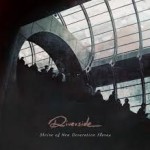 Riverside have always been one of Poland’s finest bands, and with the combination of 70s Deep Purple style hard rock riffs and Porcupine Tree style atmospherics they have delivered what might be their best album to date. They may wear their influences on their sleeves to some extent, but they have more than enough creativity of there own to be any kind of pastiche.
Riverside have always been one of Poland’s finest bands, and with the combination of 70s Deep Purple style hard rock riffs and Porcupine Tree style atmospherics they have delivered what might be their best album to date. They may wear their influences on their sleeves to some extent, but they have more than enough creativity of there own to be any kind of pastiche.
Rob Cottingham – Captain Blue
 A solo album from Touchstone’s keyboard player, aided and abetted by a strong supporting cast including Touchstone guitarist Adam Hodgson and former Mostly Autumn vocalist Heather Findlay. It’s a concept album with a Gerry Anderson flavour, with music reminiscent of Touchstone’s early days, plus the occasional excursion into disco-pop.
A solo album from Touchstone’s keyboard player, aided and abetted by a strong supporting cast including Touchstone guitarist Adam Hodgson and former Mostly Autumn vocalist Heather Findlay. It’s a concept album with a Gerry Anderson flavour, with music reminiscent of Touchstone’s early days, plus the occasional excursion into disco-pop.
Thea Gilmore – Regardless
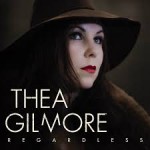 An album of Americana-tinged songs with stripped-down arrangements that emphasise the fragile beauty of the Thea Gilmore’s heartfelt vocals, enhanced this time by a string section to add some extra colour.
An album of Americana-tinged songs with stripped-down arrangements that emphasise the fragile beauty of the Thea Gilmore’s heartfelt vocals, enhanced this time by a string section to add some extra colour.
 The second half of English Electric follows in a similar vein to the first, with their very evocative and very English brand of pastoral progressive rock. The storytelling lyrical focus shifts to northern England and the twentieth century with tales of railwaymen, coal miners and shipbuilders, and it all sounds far more authentic than much 80s-style neo-prog.
The second half of English Electric follows in a similar vein to the first, with their very evocative and very English brand of pastoral progressive rock. The storytelling lyrical focus shifts to northern England and the twentieth century with tales of railwaymen, coal miners and shipbuilders, and it all sounds far more authentic than much 80s-style neo-prog. Neither quite the masterpiece some hoped for nor the trainwreck some feared, the reunion of Ozzy Osborne, Tony Iommi and Geezer Butler still delivers a very solid piece of work that proves they still have something to say after all these years. If this does prove to be their final album, it’s a worthy addition to their legacy.
Neither quite the masterpiece some hoped for nor the trainwreck some feared, the reunion of Ozzy Osborne, Tony Iommi and Geezer Butler still delivers a very solid piece of work that proves they still have something to say after all these years. If this does prove to be their final album, it’s a worthy addition to their legacy. The best no-nonsense old-fashioned rock and roll record I’ve heard all year, by a band who sound as as though they have one foot in 1958 and one in 2013, full of short and punchy tunes that hit you right between the eyes. The end result somehow ends up reminding me of some aspects of very early Blue Öyster Cult.
The best no-nonsense old-fashioned rock and roll record I’ve heard all year, by a band who sound as as though they have one foot in 1958 and one in 2013, full of short and punchy tunes that hit you right between the eyes. The end result somehow ends up reminding me of some aspects of very early Blue Öyster Cult. An evocative and atmospheric album from multi-instrumentalist and vocalist Robin Armstrong. Though there are guest appearances from Matt Stevens and Nick D’Virgilio amongst others, Robin plays most of the instrumentation from guitars to drums to keys. The haunting title track is a standout, perhaps one of the songs of the year, and there’s a lot to like across the rest of the album.
An evocative and atmospheric album from multi-instrumentalist and vocalist Robin Armstrong. Though there are guest appearances from Matt Stevens and Nick D’Virgilio amongst others, Robin plays most of the instrumentation from guitars to drums to keys. The haunting title track is a standout, perhaps one of the songs of the year, and there’s a lot to like across the rest of the album. Matt Stevens and his band in full electric mode mixing progressive rock, post-punk, indie/alternative and metal resulting in the instrumental record of the year. Narrow genre definitions cannot contain this record; it’s the sort of thing that ought to have a huge crossover appeal way beyond the narrow confines of the Prog world.
Matt Stevens and his band in full electric mode mixing progressive rock, post-punk, indie/alternative and metal resulting in the instrumental record of the year. Narrow genre definitions cannot contain this record; it’s the sort of thing that ought to have a huge crossover appeal way beyond the narrow confines of the Prog world. A powerful combination of grungy guitar riffs with progressive rock textures and melodies, sounding like what you might get if you combined Black Sabbath with Spock’s Beard. The end result is a record with a very contemporary feel despite its use of organic 70s sounds, old-school progressive rock reinvented for the 21st Century.
A powerful combination of grungy guitar riffs with progressive rock textures and melodies, sounding like what you might get if you combined Black Sabbath with Spock’s Beard. The end result is a record with a very contemporary feel despite its use of organic 70s sounds, old-school progressive rock reinvented for the 21st Century. The long-awaited début from Luke Machin’s band combines some stunning instrumental virtuosity with a very mature approach to composition. Their complex and ambitious songs are a seamless blend of metal, jazz and rock into, with great use of dynamics and an ear for a good melody. This is the sound of a band from whom we can probably expect great things over the coming years.
The long-awaited début from Luke Machin’s band combines some stunning instrumental virtuosity with a very mature approach to composition. Their complex and ambitious songs are a seamless blend of metal, jazz and rock into, with great use of dynamics and an ear for a good melody. This is the sound of a band from whom we can probably expect great things over the coming years. The fruit of a successful Pledge Music project, Mr So and So’s fourth album is by far their most impressive to date. It’s a hugely varied record with some strong songwriting that uses their distinctive dual male/female lead vocals to great effect, and the harder-edged guitar-driven sound strongly captures the power and energy of their live performances.
The fruit of a successful Pledge Music project, Mr So and So’s fourth album is by far their most impressive to date. It’s a hugely varied record with some strong songwriting that uses their distinctive dual male/female lead vocals to great effect, and the harder-edged guitar-driven sound strongly captures the power and energy of their live performances. Riverside have always been one of Poland’s finest bands, and with the combination of 70s Deep Purple style hard rock riffs and Porcupine Tree style atmospherics they have delivered what might be their best album to date. They may wear their influences on their sleeves to some extent, but they have more than enough creativity of there own to be any kind of pastiche.
Riverside have always been one of Poland’s finest bands, and with the combination of 70s Deep Purple style hard rock riffs and Porcupine Tree style atmospherics they have delivered what might be their best album to date. They may wear their influences on their sleeves to some extent, but they have more than enough creativity of there own to be any kind of pastiche. A solo album from Touchstone’s keyboard player, aided and abetted by a strong supporting cast including Touchstone guitarist Adam Hodgson and former Mostly Autumn vocalist Heather Findlay. It’s a concept album with a Gerry Anderson flavour, with music reminiscent of Touchstone’s early days, plus the occasional excursion into disco-pop.
A solo album from Touchstone’s keyboard player, aided and abetted by a strong supporting cast including Touchstone guitarist Adam Hodgson and former Mostly Autumn vocalist Heather Findlay. It’s a concept album with a Gerry Anderson flavour, with music reminiscent of Touchstone’s early days, plus the occasional excursion into disco-pop. An album of Americana-tinged songs with stripped-down arrangements that emphasise the fragile beauty of the Thea Gilmore’s heartfelt vocals, enhanced this time by a string section to add some extra colour.
An album of Americana-tinged songs with stripped-down arrangements that emphasise the fragile beauty of the Thea Gilmore’s heartfelt vocals, enhanced this time by a string section to add some extra colour.


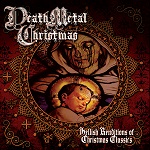 I have been listening to the leftover promos sent to Trebuchet Magazine, and I’m beginning to see why some professional music journalists become jaded and cynical. Some of it’s OK, but just not my thing, but I’m reminded that there is some god-awful rubbish out there.
I have been listening to the leftover promos sent to Trebuchet Magazine, and I’m beginning to see why some professional music journalists become jaded and cynical. Some of it’s OK, but just not my thing, but I’m reminded that there is some god-awful rubbish out there. How often does a much-hyped creative work end up leaving you cold? I’m not talking about heavily-promoted artistic flops like Oasis’ infamous “Be Here Now”. I’m thinking more of things that create a huge buzz within a given fandom, but leave you scratching your head over quite what all the fuss is about.
How often does a much-hyped creative work end up leaving you cold? I’m not talking about heavily-promoted artistic flops like Oasis’ infamous “Be Here Now”. I’m thinking more of things that create a huge buzz within a given fandom, but leave you scratching your head over quite what all the fuss is about.